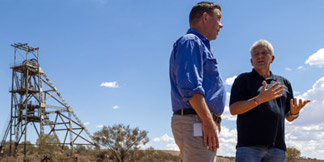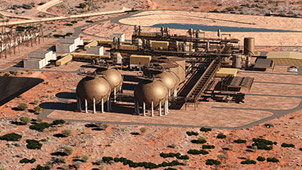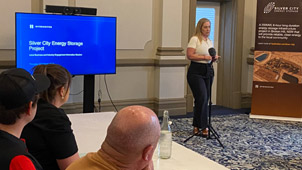
Supporting the growth of the Broken Hill community
Silver City - delivering clean, reliable energy to Broken Hill and innovation to Australia.

Welcome to Country
Paying respect to and working with traditional owners of the land.

Community updates and progress reports
Stay across the latest Silver City developments.

Providing clean, reliable energy to Broken Hill
Located in Broken Hill, NSW, the Silver City Energy Storage Centre will provide more that 8 hours or 200 MW of energy storage for clean, reliable energy.


Creating opportunities for Broken Hill
Find out about ways for business to partner with Silver City.
About Silver City
Located in Broken Hill, NSW, the Silver City Energy Storage Centre will provide more than 8 hours or 200 MW of energy storage for clean, reliable energy. A-CAES (pronounced “case” is a well-proven and commercially-viable technology that can provide much-needed energy storage and back-up power for the Broken Hill community.
Latest Updates
Community Benefits
01
Boosting the Economy
Up to 750 new jobs during construction and 36 when operational.
02
Efficient Transmission
Maximises use of existing power lines, saving costs.
03
Supporting Community
$240M investment into Broken Hill and $550M into NSW.
04
Minimal land & Water Use
Provides long duration storage with low land and water needs, using a decommissioned mining site.
05
Reliable Power
Stable electricity to Broken Hill.
06
Environmental Impact
Emissions-free process helps achieve 100% renewable energy for Broken Hill by 2030.
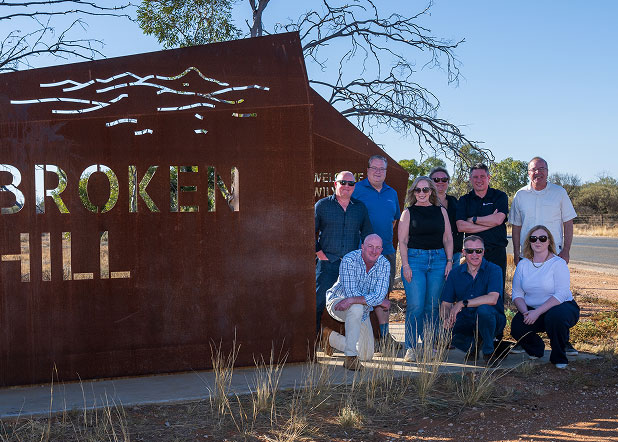
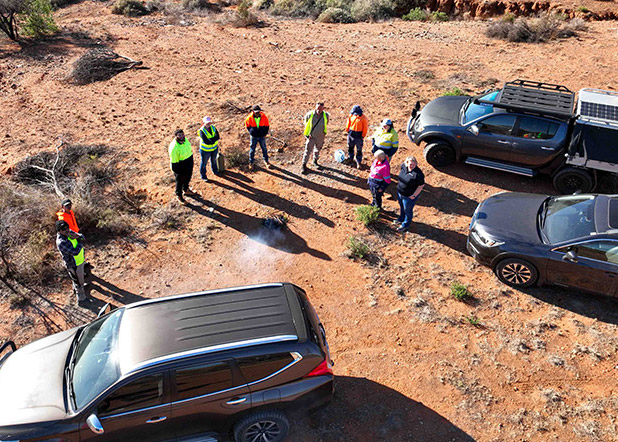
News and upcoming events
“Silver city will transform Broken Hill by providing new jobs, a stable power grid an reducing costs.”
Frequently Asked Questions
Managing construction noise
The Silver City Energy Storage Project recognises that construction noise can be a source of disruption and is committed to mitigating and minimising construction noise impacts, wherever possible. We will work closely with you during construction.
What will our construction noise sound like?
Construction activities will impact you differently depending on what work we are completing and what equipment is being used.
How do we reduce construction noise impacts?
As construction noise is temporary and varies over time, a feasible and reasonable approach is taken to mitigation, based upon the requirements of the EPA’s Interim Construction Noise Guideline. Construction works will be undertaken within the conditions of approval granted by the Department of Planning, Housing and Infrastructure and specific measures to manage noise, vibration, dust and traffic have been identified through the planning process.
Mitigation measures adopted to reduce and manage noise during construction may include:
- Maximising the distance between noisy equipment and residential areas
- Scheduling noisy work at less sensitive time periods
- Regular maintenance of equipment
- Installing noise control equipment on machinery and tools
- Noise compliance monitoring
- Locating compounds, stockpiles away from residential areas
- Use of temporary noise barriers
- Scheduling respite periods for high noise activities
- Providing advance notice of planned noisy work to neighbouring communities to assist them to plan.
Unfortunately, in some instances we have limited options available to reduce noise impacts give the type and range of machinery and equipment required to carry out the tasks.
Work hours
Work is carried out during standard construction hours (from 7am to 6pm Monday to Saturday) for the SCES facility and (7am to 6pm Monday to Friday and between 8am and 1pm Saturday) for the transmission line.
Some activities can be carried out outside standard hours, but are limited to:
- No more than 5dB above Rating Background Level at any residence in accordance with the Interim Construction Noise Guideline (DECC, 2009); and
- No more than the Noise Management levels specified in Table 3 of the Interim Construction Noise Guideline (DECC, 2009) at other sensitive land uses, or
- Delivery of large or oversize machinery, prefabricated elements and construction material;
- Emergency work
- Utility work
- With written approval from the Planning Secretary.
Reducing dust during construction.
The construction of the Silver City Energy Storage project will be undertaken within the conditions of approval granted by the Department of Planning, Housing and Infrastructure and specific measures to manage noise, vibration, dust and traffic have been identified through the planning process.
Using water to manage dust
Water carts are one of the most visible methods use to suppress dust on construction projects. However, they are not the only mitigation measure Planning, progressive stabilisation and early landscaping can play an important role in managing dust during construction.
When required, water used for dust suppression on active areas of construction is sourced from local supply.
Our Partners




